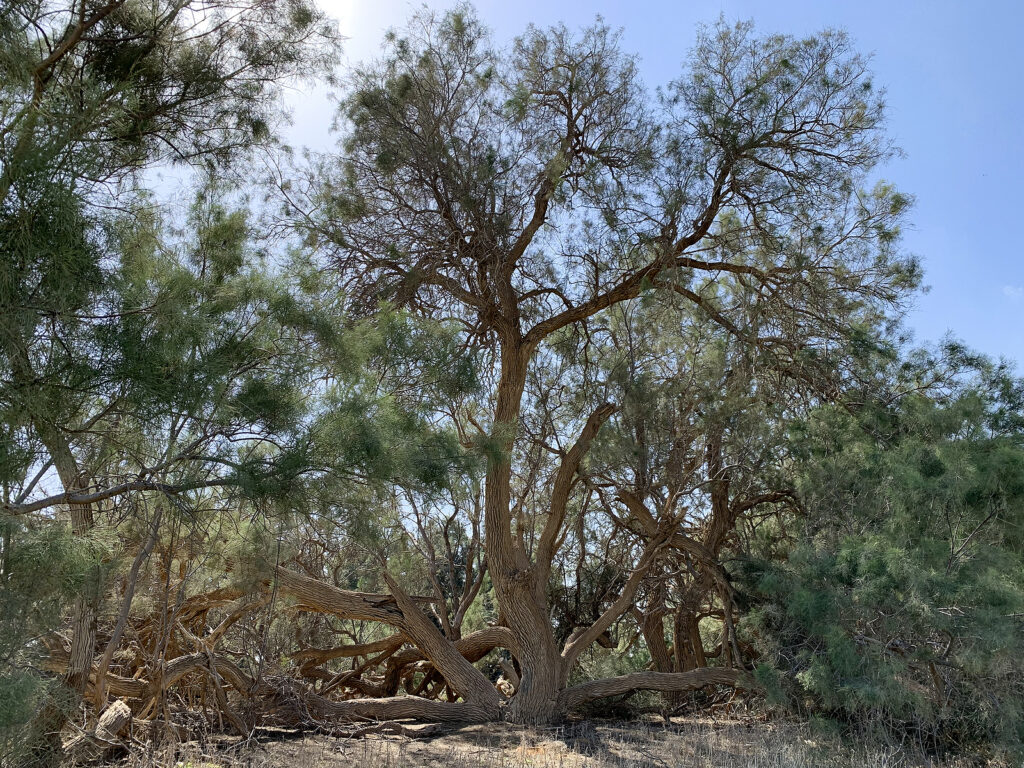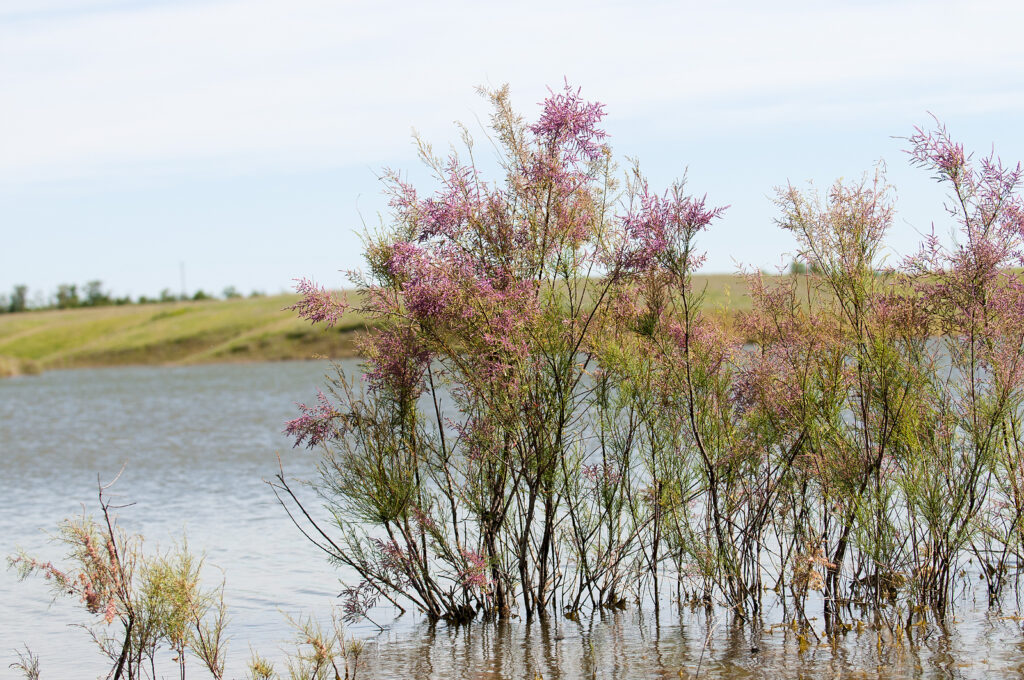Tamarix — commonly called Tamarisk–are grown for their attractive, feathery foliage of small needle-like leaves and racemes of small pink or rose flowers. They are large shrubs and small trees that grow in windy locations, salt spray, and poor or sandy soil. They can be used as a windbreak, exposed hedge, and in seacoast gardens.
Tamarix can be invasive in mild-winter regions; they are less aggressive in chilly winter regions. They need regular pruning and can become top-heavy and unstable if not attended to.
Tamarix is a genus of more than 50 species of deciduous shrubs and small trees. Tamarix is native to coastal sites and dry or marshy areas from West Europe and the Mediterranean to East Asia and India.

Get to know Tamarix
- Plant type: Deciduous shrubs or trees
- Growing zones and range: Zones 3 to 9 depending on the variety
- Hardiness: Hardy to Zone 4
- Height and width: 10 to 20 feet (3-6m)tall and wide depending on the variety
- Growth rate: Mooderate
- Form and habit: Graceful and founded
- Foliage: Long feathery branches; tiny, scalelike, light, green or bluish foliage on airy, arching, reddish branches; unusual foliage is created by .3 inch (.8cm) scalelike leaves that cling close to the stems
- Flowers: A mist of pink blossoms with fluffy flowers, about .1 inch (.3cm) across, tightly packed in pencil shaped spikes grouped in large clusters at the ends of branches
- Bloom time: Spring or summer
- Uses: Windbreak, seashore, in desert regions, or windy places, as well as ordinary gardens and shrub borders; in masses or as specimens
- Common name: Tamarisk
- Botanical name: Tamarix
- Family name: Tamaricaceae
- Origin: Meditteranean, Caspian, and Black Sea coasts
Where to plant Tamarix
- Plant Tamarix in full sun.
- Plant Tamarix in well-drained soil.
When to plant Tamarix
- Set Tamarix in the garden in spring or autumn.
- Sow seed in a cold frame as soon as it is ripe.

Planting and spacing Tamarix
- Set bare-rooted Tamarix out in early spring and cut the tops back to about 6-12 inches (15.2-30.5cm) from the ground.
- Container-grown Tamarix can be set out at any time without cutting back.
- Balled-and-burlaped Tamarix, those with original soil ball wrapped in burlap, are not usually satisfactory because Tamarix do not have enough roots to hold the soil ball together.
How to water and feed Tamarix
- Give Tamarix moderate to very little water.
- Feed Tamarix with an all-purpose organic fertilizer in spring.
How to care for Tamarix
- Tamarix species—Krashgar, Odessa, and five-stamened tamarisks—should be pruned back severely in early spring before new growth starts, leaving only 2-3 inch (5.1-7.6cm) stubs of the previous season’s growth so that the current season’s growth can produce many stems and an abundance of flowers.
- Prune Tamarix regularly to maintain graceful effect.
Tamarix pests and diseases
- Tamarix is seldom bothered by pests or diseases.
Tamarix propagation
- New Tamarix plants can be started from softwood cuttings of young growth in late spring or early summer, from semihardwood cuttings of more mature growth in mid- or late summer, or from hardwood cuttings of dormant leafless growth in late fall or early winter.
Tamarix varieties to grow
- Tamarix hispida, Kashgar tamarisk, Zones 6 to 10.
- Pink Cascade grows about 6 feet (1.8m) tall. Blossoms in late summer and early fall and have silvery-green foliage.
- Summer Glow has darker pink flowers and reaches a height of 8 feet (2.4m). Blossoms in late summer and early fall and have silvery-green foliage.
- T. odessana, Odessa tamarisk, grows 6 feet (1.8m) tall and flowers in mid- to late summer. Zones 4 to 10.
- Small-flowered tamarisk grows 12-15 feet (3.7-4.6m) tall and flowers in late spring and early summer.
- Five-stamened tamarisk grows 12-15 feet (3.7-4.6m) tall and blooms in mid- to late summer. Zones 2 to 10.
- T. pentandra rubra, has deeper pink flowers.
- T. parviflora, Small-flowered tamarisk, 12-15 feet (3.7-4.6m) tall, usually not as wide. Light pink blossoms grow on the previous season’s growth, not on new growth, and should be pruned immediately after they bloom; cut off the outer ends of the stems that produced flowers.
- T. pentandra (T. ramosissima), Five-stemmed tamarisk, Salt cedar, a native of Europe and Asia. To 10-15 feet (3.1-4.6m) tall, usually not as wide. Rosy pink flowers in spring or early summer. Blooms on new wood; prune during late dormant season. ‘Cheyenne Red’ has deeper pink blooms than the species; ‘Summer Glow’ has bright pink flowers and blue-tinged foliage; ‘Rosea’ bears rich pink flowers later in summer. Zones 3 to 8.



